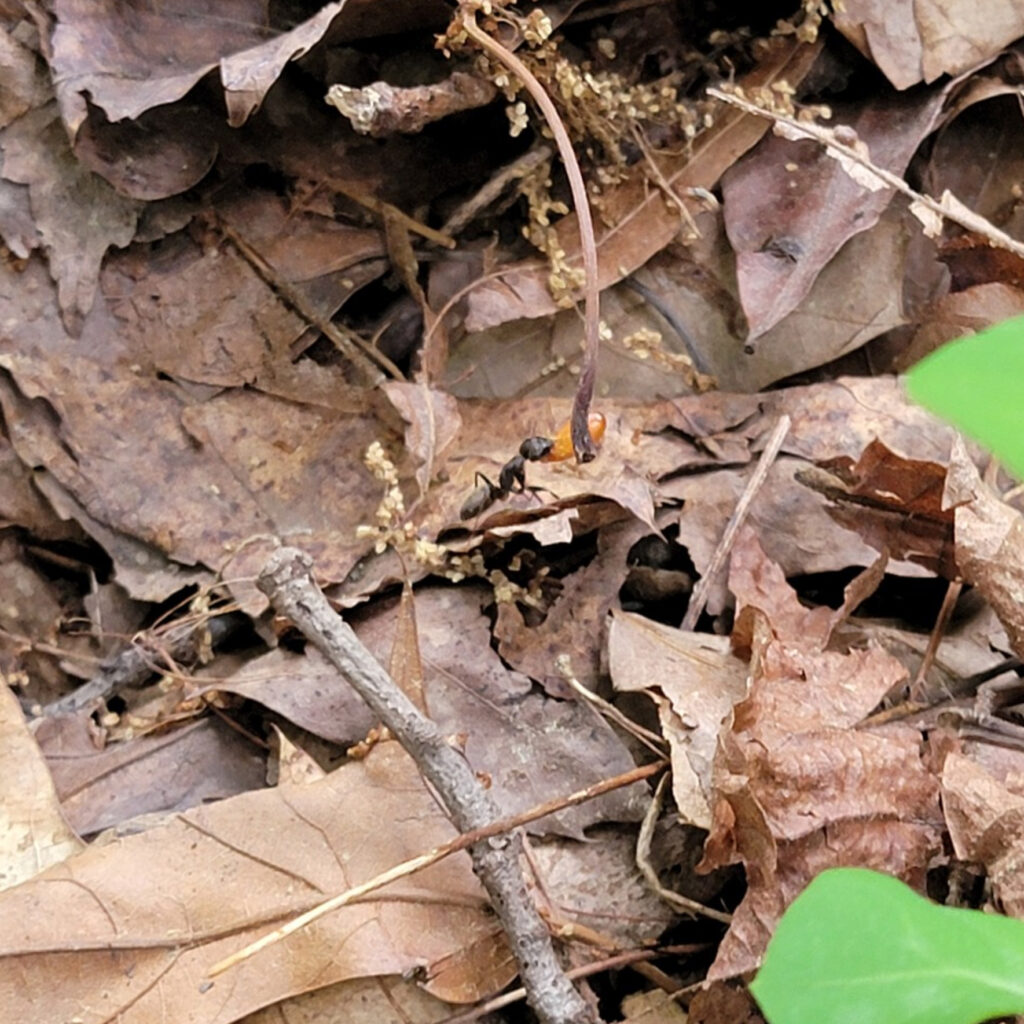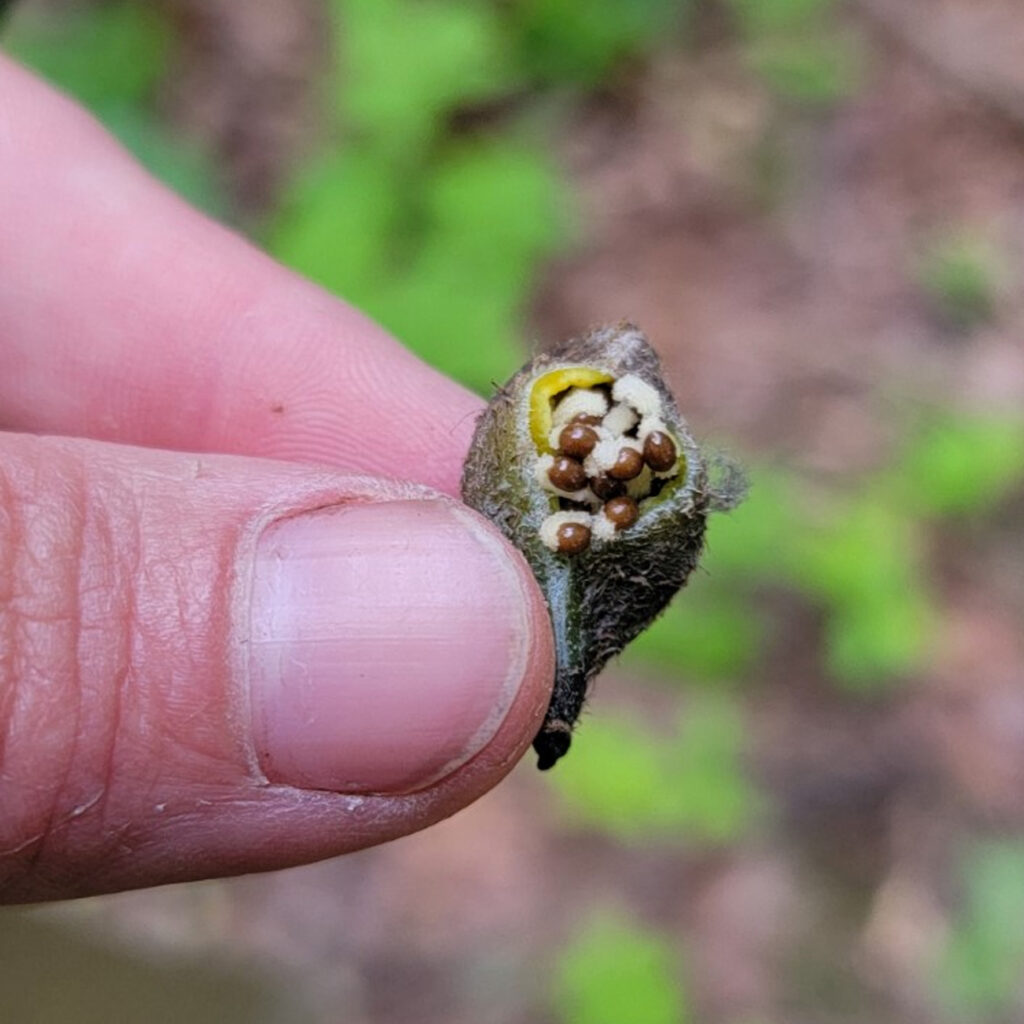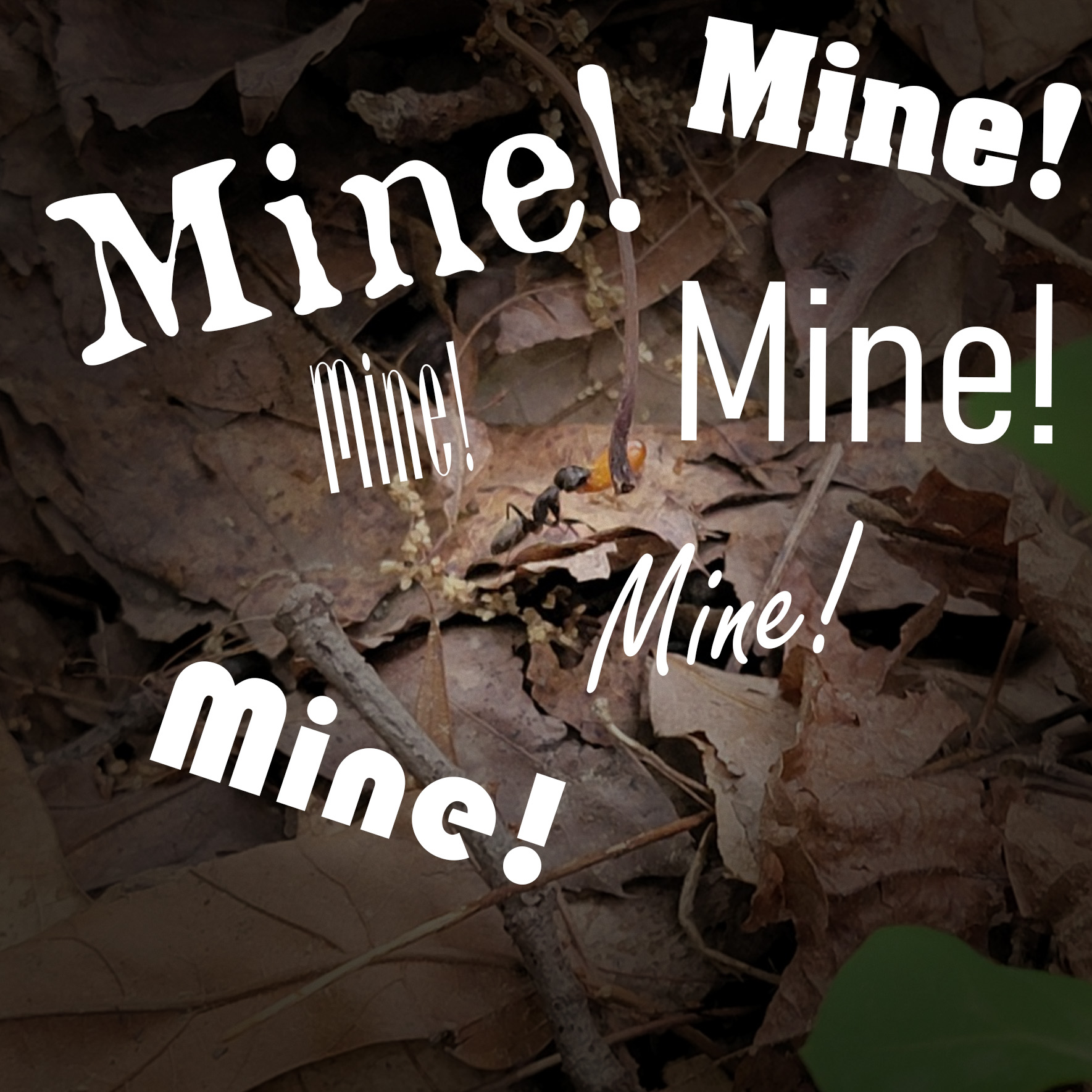… was that pun a bit too much of a challenge? Elaiosome, eh-lie-o-sowm, eh, let some…
Ok, maybe it’s a stretch, but the idea isn’t. You should let some ants sow your seeds, especially when they have elaisomes. What the heck are elaiosomes anyway, and how would you know they’re on your seeds? Where do the ants come into play?
The answer to the last question is myrmecochory. I was going to try to make a pun from that too, since it’s pronounced mir-mee-koh-korry and rhymes with oh I’m so sorry. I’m not actually sorry though. This is probably one of my favorite examples of plants using insects to do their bidding. We humans aren’t the only ones who know how to “sweeten the deal,” so to speak. Plants have been doing this longer than humans have been around.
New Vocabulary: Elaiosome and Myrmecochory
Myrmecochory is seed dispersal by ants, and elaiosomes are how plants usually trick the ants into doing this. It’s like ant crack that plants glue onto each seed. Supposedly they’re just made of lipids and proteins, but ants will sniff them out so fast and move those seeds, it does make you wonder. After all, if you squish a grub, that’s also lipids and proteins, and I haven’t seen ants running after that.
Speculation aside, ants do find them extremely quickly. Last year, I tossed one, possibly two pods filled with ripe Jeffersonia diphylla seeds in a cleared section in my woods. I mean, I knew that they did this – after all, I have a large patch of Sanguinaria canadensis. Ever since I cleared around the plants and nearby of most invasive species, they’ve been quickly expanding. I find bloodroot seedlings 20-30 ft away from the patch. Similar to twinleaf, bloodroot seeds also have elaiosomes.

I was absolutely fascinated. It took less than five minutes for the ants to locate the popped open pod and begin clearing it out. There are a bunch of photos of this singular ant struggling up and over the leaf litter trying to run this treasure back to her nest. Unfortunately, most of them are blurry, because despite the struggle, she was still moving very quickly. At some point, I lost track of where she was headed.
How well does this work?
Utilizing ants to sow your seeds on your behalf works far better than the artificial process. I had purchased this seed in the past, and despite following all instructions, I did not get any of them to germinate. Others have mentioned to me that they had similar issues. I think you might have more success if you immediately sow fresh seed, but I have a question…
Why create all that extra work for yourself, when they know what they’re doing?
I have so many seedlings in pots that I need to split up, pot up, and eventually bump up. They need to be watered and fertilized. I have to babysit them and make sure they’re okay. All of that of course depends on whether or not the seeds even germinate. The ants have all that covered, including fertilizer.

Almost exactly to the day when I had the ants carry off my seeds, I spotted seven seedlings in total. It’s possible there are a few that I missed. It would appear all seedlings are healthy and thriving.
What happens with the seed after the ants take it back?
The elaiosomes on the seeds are fed to the larvae in the nest. Once they’ve cleaned their “plates,” the seed is moved to what is essentially their compost bin. Here is where they deposit other detritus, like their frass (aka ant poop) and their dead (both their own and I guess other insects). This is at the optimal depth and conditions for the seed to germinate, and the waste is rich in nutrients.
Now, the next part is something I haven’t seen explained anywhere, but I can only imagine. Here’s a giant seed sitting in their waste chamber. As the soil warms up, it germinates, shooting a massive radicle into the soil. This radicle then pushes the seed up and out of the soil. Other roots begin to form and spread out, shooting through the transport channels in the nest. If there’s ever been a better metaphor for the elephant in the room, I don’t know it. I can only imagine the amount of destruction this seed causes to the ant nest.
Here they are, minding their own business, when this seed that fed their larvae suddenly rips through the nest, wreaking havoc. The plant not only tricked the ants to carry off and care for its progeny, it delivered utter chaos as a final payment for babysitting. And you know what? The ants will just rebuild their nest. They’ll do it again that same spring, with a fresh batch of seeds. Maybe they’ll rebuild their waste chamber in another area, far from the plant’s problem child. The next seed goes in there, and the following year, destroys that as well.
This is almost too easy
Last year, we experienced a serious drought, one that we’ve only just recovered from with all our spring rains. Had I purchased and planted Jeffersonia diphylla as a mature plant, I would have had to stay on top of caring for it until it was established. In the end, unless it happened to have seed on it, I would still only have that one plant. I’m not sure about this species, but many plants are not self-compatible. Even if they were, that isn’t great for genetic diversity.
However, by bringing home a seed pod from a single plant and allowing the ants to do all the work, I now have seven healthy seedlings. They are growing in optimal conditions for their species. They are established and adapted to their respective environments. Surprisingly, the ants were good about keeping them within the confines of the woodland beds. The same can’t be said about how they’ve sown my bloodroot.
Although the production of elaiosomes requires extra energy from the plant, the elaiosome ultimately increases the plant’s ability to reproduce. The ants’ persistent foraging activity due to the attraction of the elaiosome quickly removes seeds from under the parent plant and lessens the chance that seeds will be consumed and destroyed by rodents or birds. Since most seeds gathered by the ants end up in the ants’ “compost piles,” seed germination and seedling growth are encouraged by the nutrient-rich soil. Myrmecochory reduces competition for sunlight and nutrients in existing plant colonies and encourages establishment of new ones, therefore slightly expanding the plant’s range.
Jacque Hallam, Natural Resources Coordinator, Beall Woods State Park
Does this work for everyone?
Of course not. First, one needs to have access to fresh seed pods. I was fortunate in that I had such access, but I know that’s hard to find. Maybe I could try offering fresh seed pods for some species. Technically I’d be selling the pods, not the seeds, which would probably get around the seed selling laws. Do not quote me on this. I am not a lawyer. However, I’ve seen plenty of people get around legality of selling plants by selling the pots that contain them, and the plant just comes with it. Having to do all the testing on germination and logging batches and whatnot would take away from the precious little time one has to sow fresh seed. I’m sure I could figure out some work-around to be able to offer this.
The other issue is that this does not work when you’ve got carefully curated beds. You have no control over where the ants sow your seeds. They could end up in your lawn. In fact, they probably would end up in your lawn. You’d have to watch for the seedlings and hope you catch them before they get mowed, stepped on, or damaged in some way. Even worse, what if the neighbor ended up with your seedlings? Good luck explaining to your neighbor how their ants stole YOUR seeds because they wanted elaiosomes.
There are times when purchasing a live plant is simply a better option to get a population established on your property. Notice how I did this in the woodland beds, and not another part of the yard.
Where this works well is when you are restoring a habitat like a woodland, or rewilding a property. Typically in these areas, you’re not going to be tending to them as often. You may or may not have the ability to water the plants on site. I’ve found that scattering seed in those areas can be hit or miss. However, my success rate with myrmecophytes has been far greater sowing them in this manner than in pots.

What Are Some Examples Of Eastern US Native Myrmecophytes?
As far as I’m aware, all of the myrmecophytes native in our area are spring or early-summer blooming plants, many of which are ephemeral. There are maybe one or two which may bloom a bit later in the season. Here are the ones I remember off the top of my head, and I’ve linked the ones that are available in my shop. Add them to your garden, and you, too, can enjoy watching the ants disperse your seeds.
- Anemonoides quinquefolia
- Asarum canadense
- Capnoides sempervirens
- Claytonia virginica
- Claytonia caroliniana
- Dicentra spp.
- Hepatica spp.
- Jeffersonia diphylla
- Sanguinaria canadensis
- Stylophorum diphyllum
- Trillium spp.
- Viola spp.

